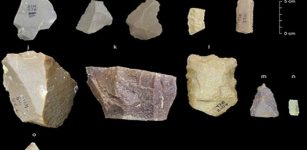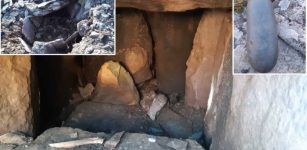A 19th-Century Sailing Ship Loaded With Champagne, Wine, Porcelain And Mineral Water Found At The Bottom Of The Baltic Sea
Conny Waters - AncientPages.com - A 19th-century sunken shipwreck full of champagne bottles, mineral water, wine, and porcelain was found at the bottom of the Baltic Sea.
Image credit: Tomasz Stachura / Baltictech
Polish divers made this impressive discovery was made approximately 20 nautical miles (37km) south of the Swedish island of Oland.
Upon closer inspection, which took much longer than planned, it turned out that the researchers were not dealing with an ordinary fishing boat it first appeared to be.
After descending to the bottom of the Baltic Sea, the divers saw a 16-meter-tall historical sailing ship. The ship’s cargo was enormous. It wasn't easy to estimate the shipment quantity but it included more than one hundred bottles of champagne and baskets with about 100 sealed clay bottles of mineral water.
Image credit: Tomasz Stachura / Baltictech
Based on the analysis of the stamps on the clay bottles, the Poles determined that they were filled with mineral water produced by the German company Selters between 1850 and 1867. The Selters factory still exists today, and its waters and other beverages are still considered exquisite.
To this day, a ceramics factory also produces the bottles found in the wreck.
At that time, mineral water was of great value and, therefore, was treated almost like medicine. This commodity was exclusively available for consumption at royal dining tables. Its monetary worth was of such significant magnitude that law enforcement personnel were required to accompany the product during transportation.
Image credit: Baltictech
The archaeological evidence suggests that the vessel was filled to its maximum capacity. This finding indicates that it was likely part of a significant commercial shipment.
Image credit: Tomasz Stachura / Baltictech
Such vessels were commonly used for transporting goods in large quantities for trade purposes. The full contents provide valuable insights into the scale of commercial activities and the types of commodities exchanged during this historical time.
The Poles inform that further exploration of the ship will take place in cooperation with the Polish "Maris" Foundation, Södertörn University and professor of maritime archaeology Johan Rönnby. He is a well-known Swedish expert in the field of underwater research.
Sources: Baltictech, Rzeczpospolita, PAP
Written by Conny Waters - AncientPages.com Staff Writer
























